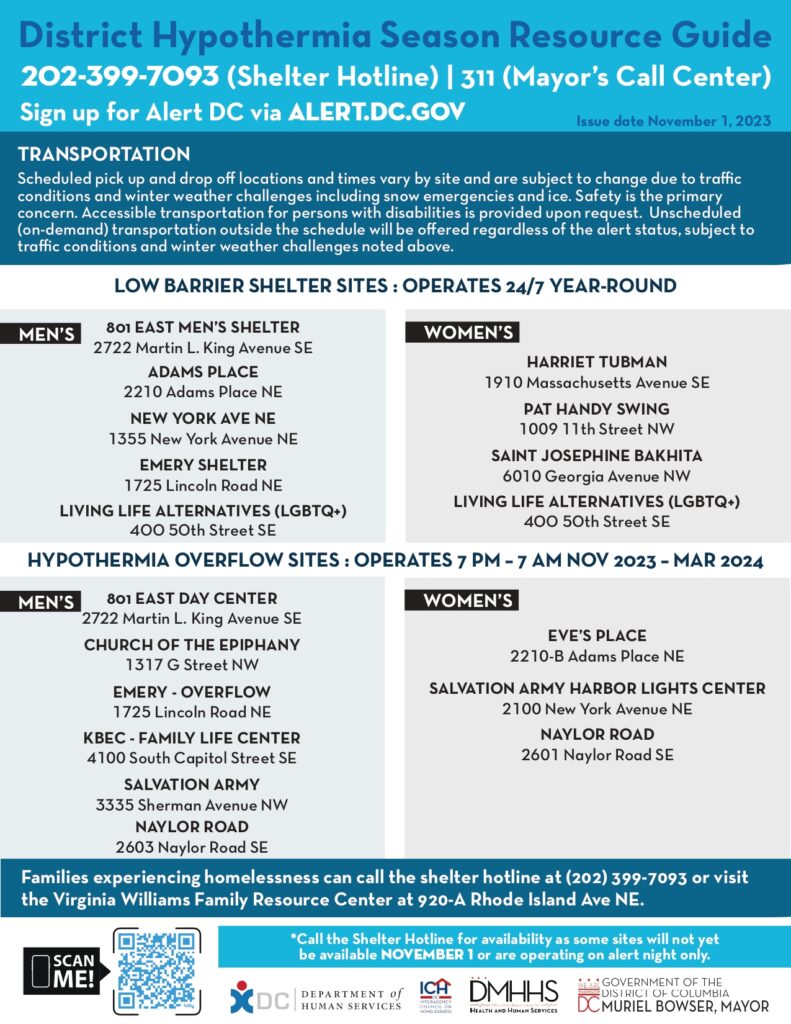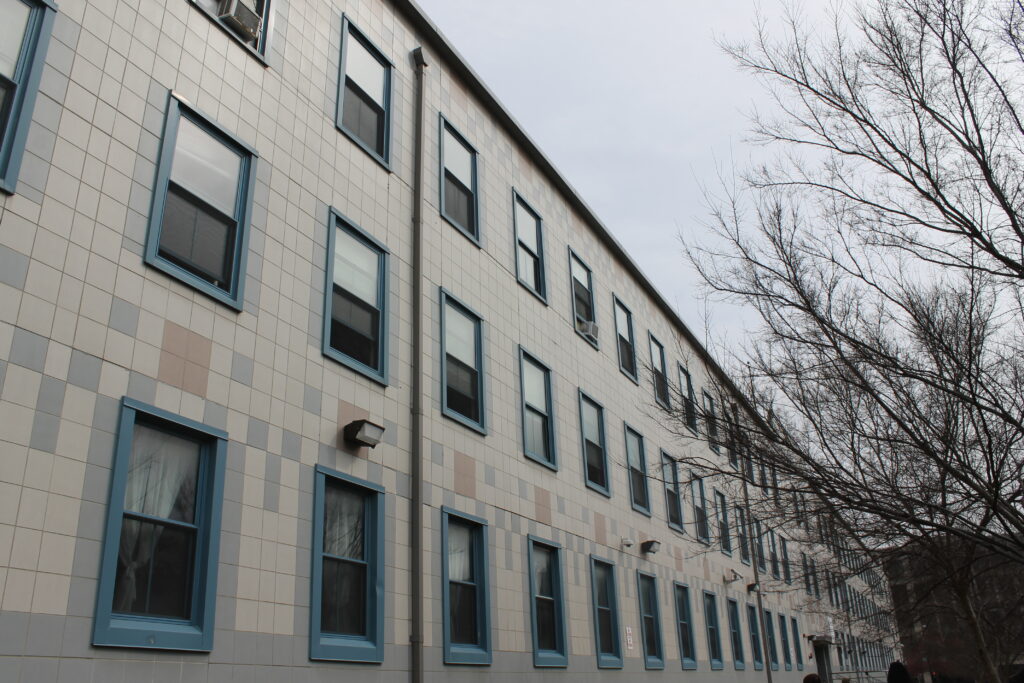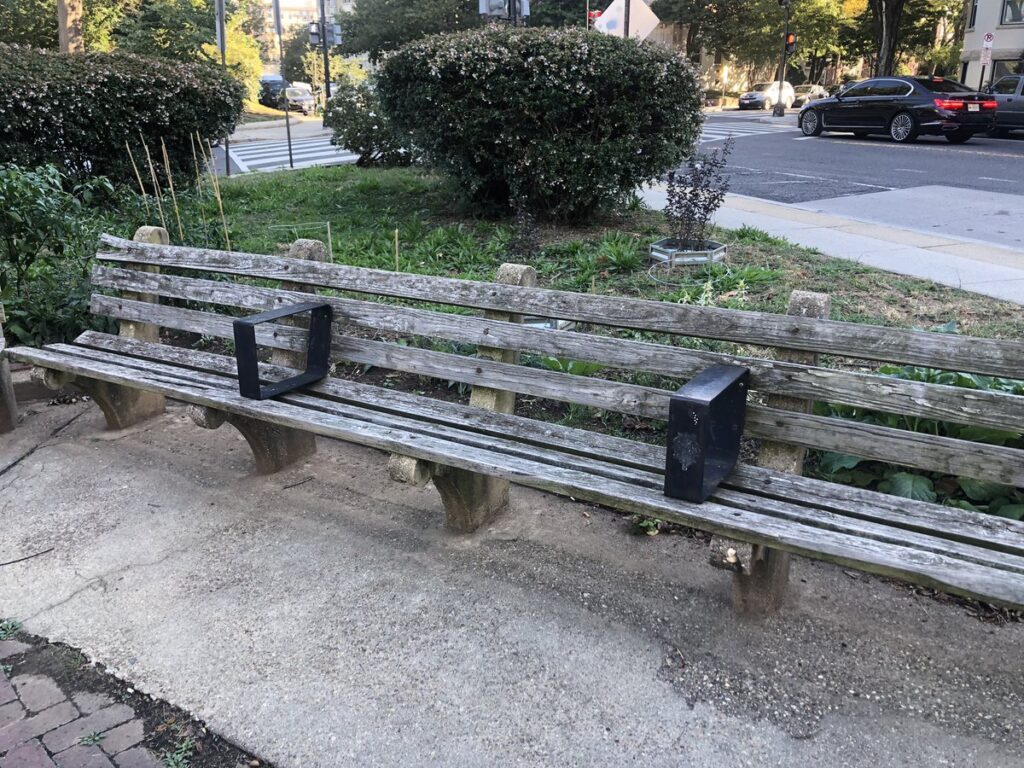If you’ve looked for winter shelter in D.C. in the past, you might notice the options look different this year.
For the first time in several years, D.C. plans to operate winter overflow shelters exclusively in existing shelters, churches and facilities run by mission-driven organizations. Recreation centers that have been open in the past will not be available because of the expansion of youth violence prevention programs.
“While a lot has changed, our core commitment remains the same,” Interagency Council on Homelessness (ICH) Executive Director Theresa Silla said before the ICH voted on this year’s winter plan.
From November through March, the D.C. government opens additional overnight shelters for people who sleep outside to escape freezing temperatures. The locations open on the first night the temperature drops below 32 degrees. This year that was on Nov. 1 this year. Unlike D.C.’s year-round shelters, which are largely open 24/7, overflow locations are open only from 7 p.m. to 7 a.m., and visitors cannot leave belongings at the sites.
Shelter beds in D.C. have been nearly full for much of the year, meaning there is little room for the surge that often comes with colder weather without additional shelter beds. While some people experiencing homelessness in the District avoid going to shelter most of the year because of concerns about safety and privacy, there’s consistently a higher demand in the winter due to inclement weather.
And D.C. legally has to meet that demand, given that the city guarantees a right to shelter for all residents when the temperature is at or below 32 degrees.
This year, the city is anticipating needing a total of almost 2,000 shelter beds during the coldest months, according to numbers presented at an ICH meeting on Oct. 17. The forecast, which is based on models from D.C.’s Department of Human Services (DHS), allows for a small increase in demand from last year.
D.C. has just under 1,300 year-round beds, all of which will be open during the winter, in addition to 700 overflow beds.

For men, year-round shelters 801 East, New York Avenue, Adams Place, Emery and Blair remain open. There are additional beds in overflow spaces at 801 and Emery. Four other sites are open for the season — Salvation Army, Church of the Epiphany, Naylor Road and the KBEC Family Life Center. By the height of the season, parts of the Center for Creative Non-Violence (CCNV) currently under construction will reopen.
For women, year-round shelters Harriet Tubman, Patricia Handy and St Josephine Bakhita remain open. For the season, there will also be beds at Adams Place Day Center, Salvation Army Harbor Light, Faith United Church of Christ, Naylor Road and CCNV, once open. Living Life Alternatives, an LGBTQ+ shelter, is open all year.
Except for CCNV, all overflow shelters opened on Nov. 1 and will stay open until March 31, unless there’s a significant drop in demand before that. D.C.’s Department of General Services is working on repairing parts of CCNV for the season, and it’s expected to reopen in December. The drywall, tile, plumbing, lighting and HVAC upgrades will allow the city to use more of the building for shelter.
The city does not plan to open any overflow sites at recreation centers, as has been common in the past. At the ICH meeting, City Administrator Kevin Donahue attributed the decision to rising violence in the city. The mayor is expanding programming for youth at recreation centers later into the night, which would make it impossible for centers to open at 7 p.m. as shelters. In the past, some communities have pushed back on the use of recreation centers, worried their children will not have anywhere to go.
In addition to churches, this year’s plan relies on Naylor Road, which generally operates as a short-term family housing facility. While the city has to open additional sites to deal with the winter surge for singles, the family system has open beds, according to the ICH presentation.
Kate Coventry, deputy director of legislative strategy at the D.C. Fiscal Policy Institute, worried at the meeting that this year’s reliance on large facilities like CCNV may discourage people from seeking shelter. For people who have safety or privacy concerns, overflow sites with 20 to 40 beds can be more attractive than 100- to 300-person shelters. Those same people may not seek overflow shelter if the only option is CCNV, a hundred-plus-bed shelter, Coventry said.
This will be the first season since the beginning of the COVID-19 pandemic without the Pandemic Emergency Program for Medically Vulnerable Individuals (PEP-V) or quarantine sites for people in shelters. Shelter densities, which were drastically reduced at the start of the pandemic, have also been increasing. Throughout the year, some providers have raised concerns that the lack of PEP-V combined with continuing arrivals of migrants will place too much demand on shelters.
If more than 2,000 people seek shelter, the city may open additional sites, including recreation centers, according to the winter plan.
When the temperature is forecast to be 15 degrees or below, D.C. may also operate warming buses in areas near encampments. The city may also extend day center and overflow shelter hours and open overnight warming sites on especially cold days.
People seeking overflow shelter for themselves or their neighbors can call the shelter hotline at 202-399-7093 to ask about open beds or request transportation, though it may not always be available. There are also scheduled routes between day centers and programs and shelters, with shuttle buses operating from 6:30 to 8:30 in the morning and 4:30 to 8:30 in the evening. Morning pickup is at shelters and overflow sites; evening pickup is at day centers, North Capitol Street and Massachusetts Avenue NE, and North Capitol Street and New York Avenue NE.
Any families seeking shelter should contact the Virginia Williams Family Resource Center. Young people between ages 12 and 17 can call 202-547-7777 to be connected with youth shelters. Young people between ages 18 and 24 can go to adult shelters and overflow sites but can also contact Covenant House or Sasha Bruce Youthwork for youth-specific shelters.
To stay updated on potentially dangerous weather conditions in D.C., sign up for AlertDC at hsema.dc.gov/page/alertdc or HopeOneSource at hopeonesource.org/dc.








